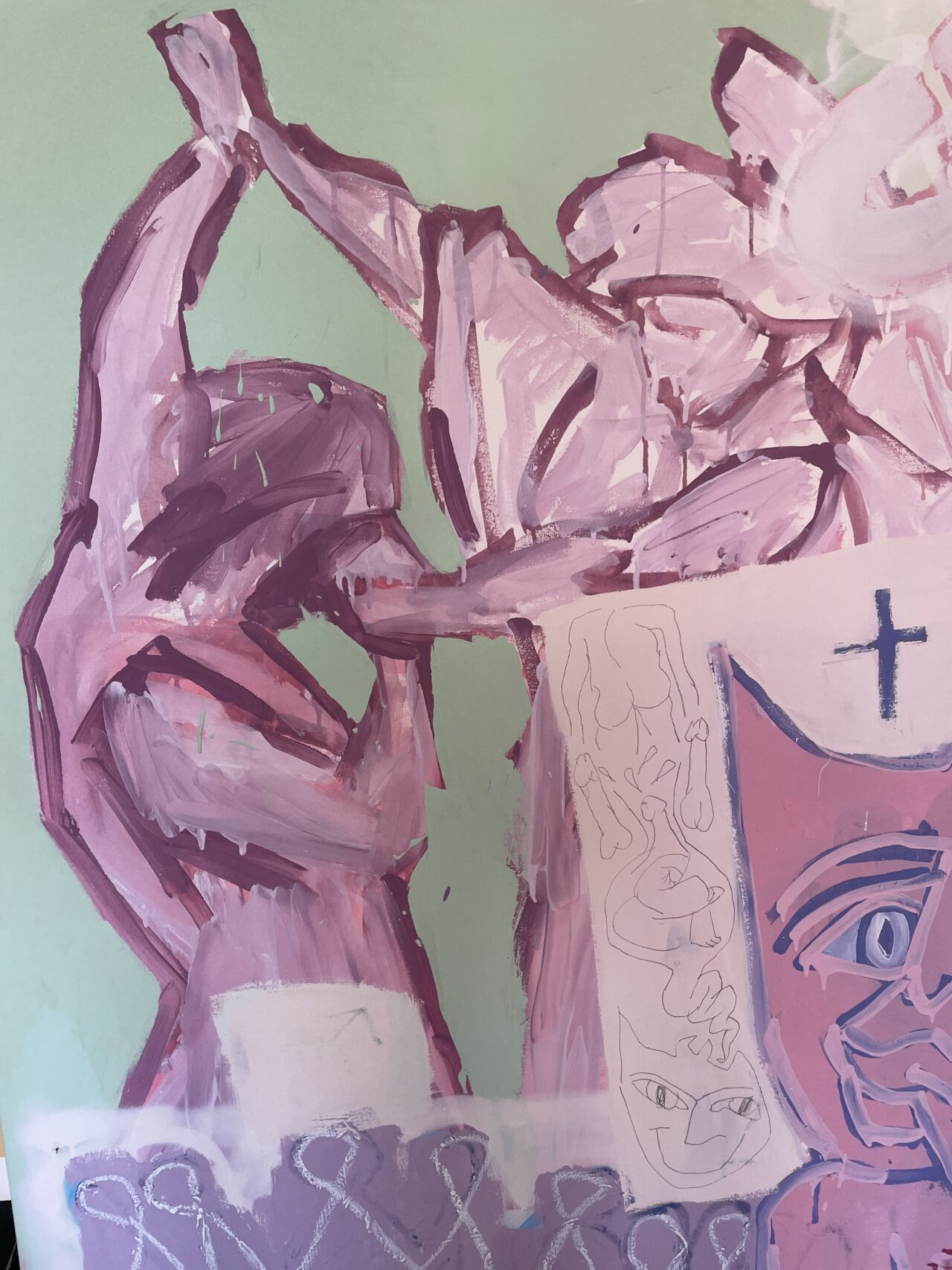The Carnival of Madness
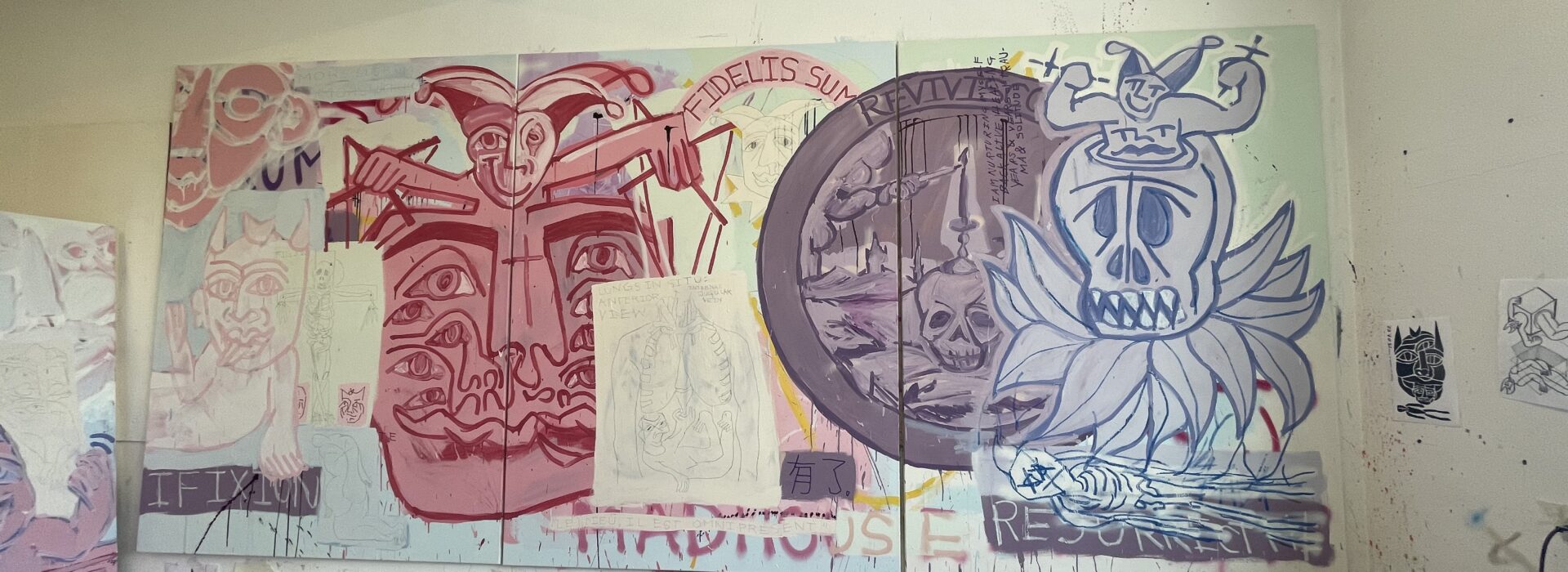
In a world full of madness, the only sane thing you can do, is go mad yourself.
(Lowenthal, 2024)
The Carnival of Madness is a series of paintings that reflects the madness of the human condition in post-truth society.
Caspar van der Heijden, who goes by the artist name Lowenthal, inherited from his deceased grandma, explores the chaotic inner world that has served as his refuge from physical suffering and illness. He perceives his inner world as a reflection of the outer world, depicting the absurdity and madness he encounters in contemporary post-truth society. Lowenthal invites his audience to find their own meaning in his work, seeing it as a mirror to both the our current zeitgeist and personal psyche of each viewer.

ABSTRACT
In the fragmented moments of postmodern society, in which the breakfast of the average neoliberal subject consists of consuming social media feeds, is one doomed to turn mad? Amidst contemporary technological advancements and the hyper rationalization of society, we have deemed ourselves to be smarter than life itself. However, one is not able to bypass intuition, spirituality and insanity. Revolving around the idea of automatic drawing as a site of alternative knowledge production, this graduation project will show how madness in art can reflect the omnipresent insanity in contemporary society.
METHOD
This project revolves around the method of automatic drawing. This surrealist method entails getting into a flow state of mind and letting drawings draw themselves with as little rational interference as possible; allowing the subconscious to express itself. In this manner, Lowenthal has obsessively sketched for the past years, constituting an archive compromising around 2000 of those drawings. These drawings constitute the foundation for his artistic practice. Through them, he aims to depict the cacophony of a post-truth society dominated by madness, absurdity, and ruled by trickster consciousness.
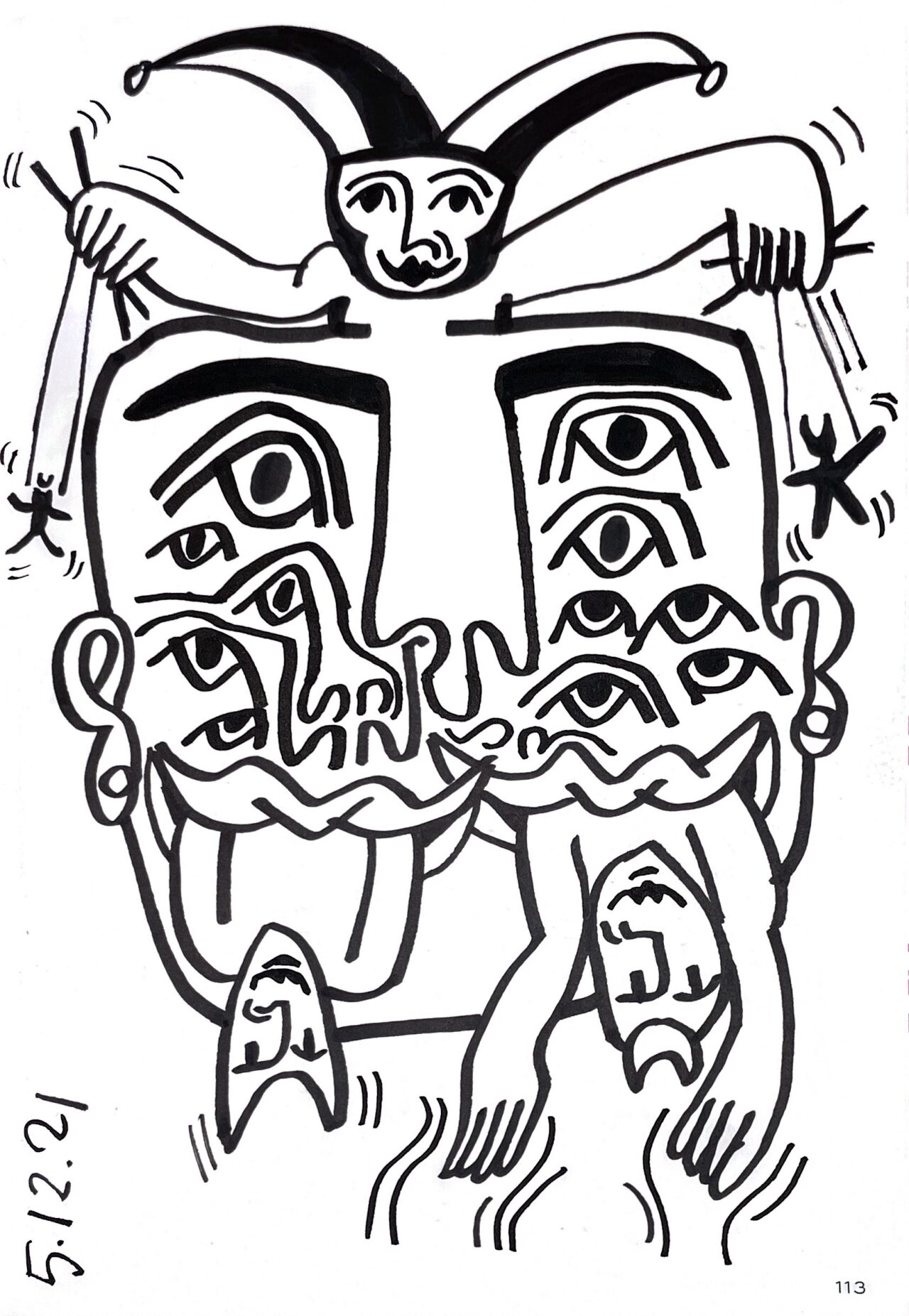
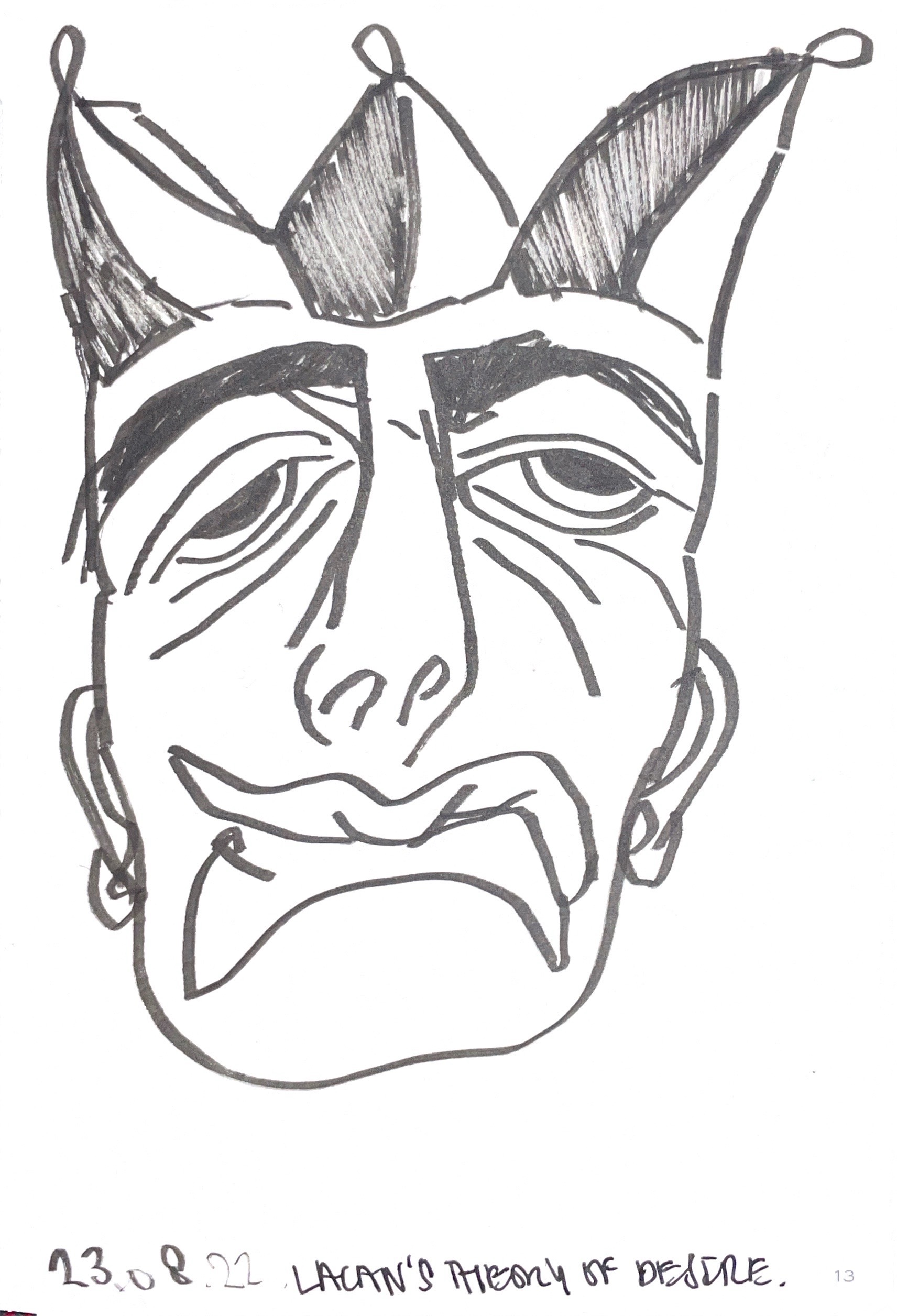
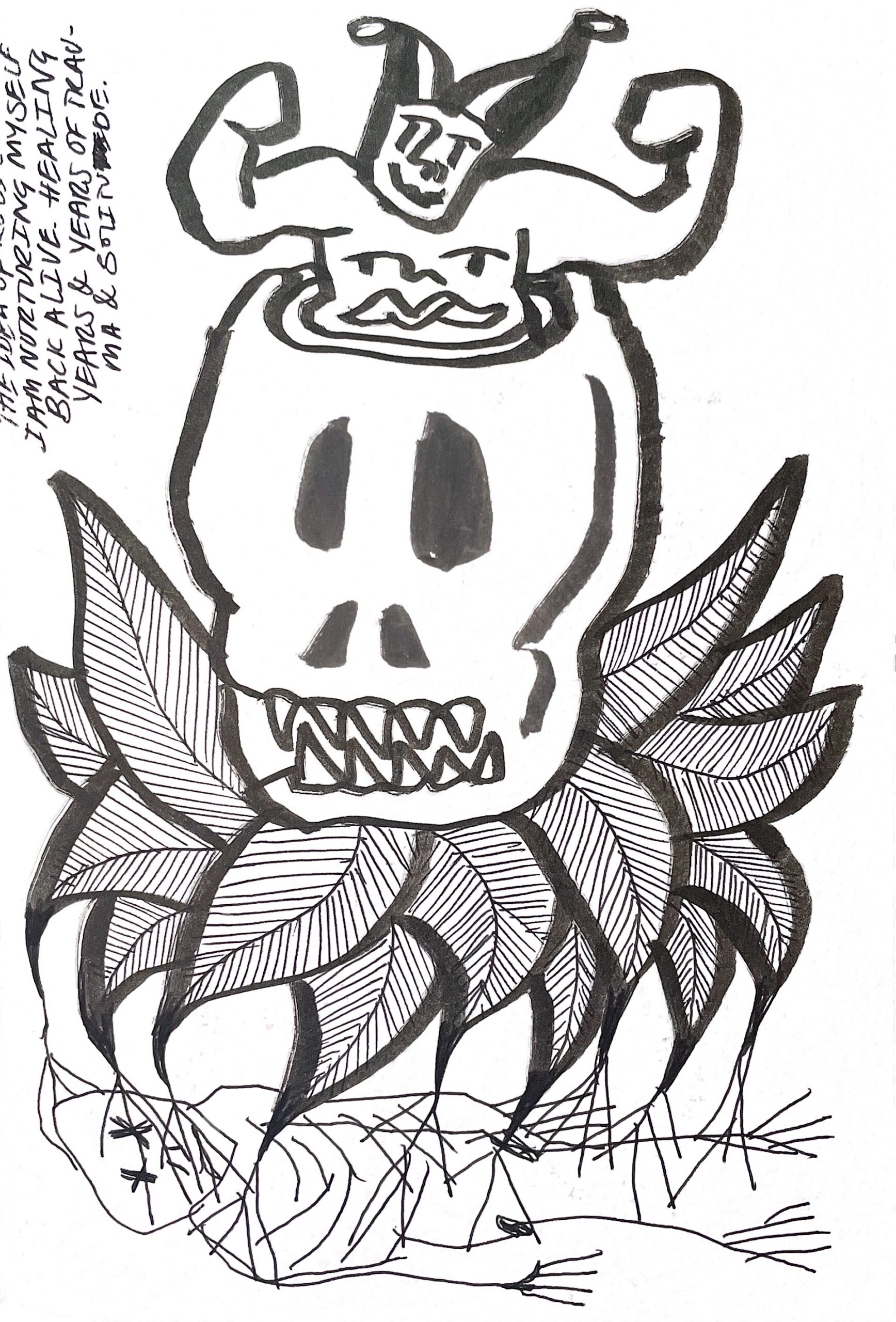
MADNESS, HEALING AND SICKNESS
Due to the prevalent sickness in his late puberty, Lowenthal exiled himself to his mind and exploring his inner landscape. He left his body and through automatic drawing and dream analysis explored the inner workings of his being. In his sketchbooks he could “take off his mask and dance to the loud music of the carnival.” He followed the pulsating rhythm of the drawn lines that lingered across the pages of his sketchbooks. The process of drawing in his sketchbooks gave him hope, soothed his sorrows and guided him back to the light. Drawing, for him, became for than simply and outlet; it became a religious ritual that was part of his daily life. Amidst this ritualistic obsession, his sketches began to unveil a symbolic language akin to the logic of dreams. Faces, masks, clowns, and other fantastical elements populated his inner world, each carrying profound meaning that helped him navigate the path to recovery, reconnecting body and soul, and ultimately reacquainting his true self.
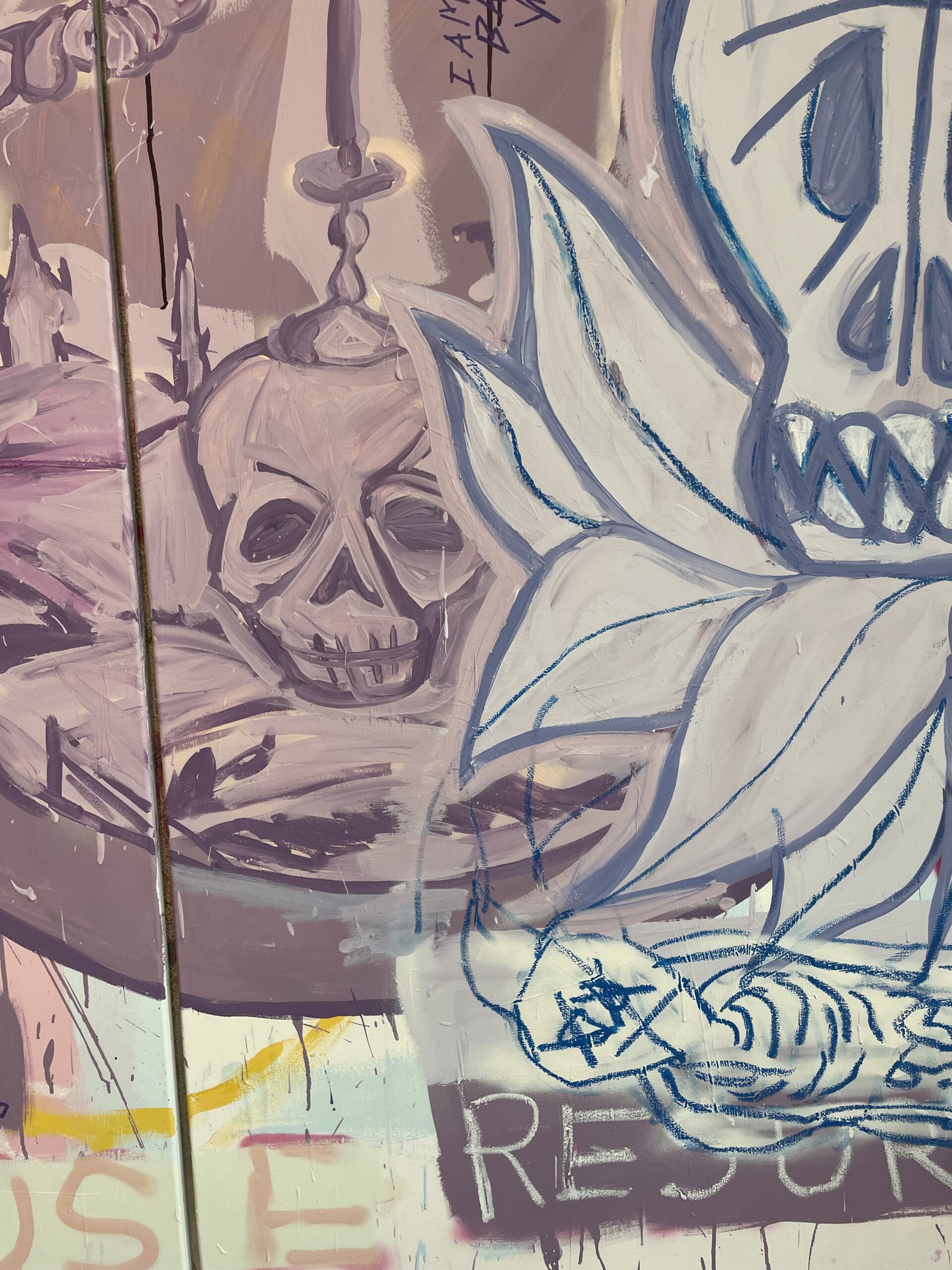
LOGIC
At some point Lowenthal started witnessing a certain type of logic in his visual language that mimicked the logic of dreams. This logic is characterized by its symbolic nature. Like in dreams, the symbols he encounters are often cryptic in nature, he does not easily understand them. Their meaning is like a blind spot for him; their content is unconscious. Through reading Jungian dream analysis and alchemy, he deciphers the, often archetypal, contents of his automatic drawings. In his search for the meaning behind the symbols, he actively communicates with aspects of the drawings. Doing so, he communicates with the unconscious aspects of his self. This is what constitutes madness for him; talking to drawings and communicating with the unconscious. Lowenthal sees this as an act of rebellion that counters the hyper-rationalization of society.
MADNESS AS COPING
Within the world of his drawings various characters and themes have resurfaced repeatedly. Kings, Queens, Cakes, Bodies, Organs, Moons, Suns and many more. However, one character was the most prevalent of all: the trickster character. It resurfaced, time and time again as clowns and jesters. It taught Lowenthal how to laugh at his suffering, how to not take life too seriously and ultimately how to cope with human existence. Therefore, for in his perception, trickster consciousness, when tactically employed is an attitude that counters madness with equal madness. Since in a world of madness, the only sane thing you can do, is go mad yourself. So when will you go mad?
